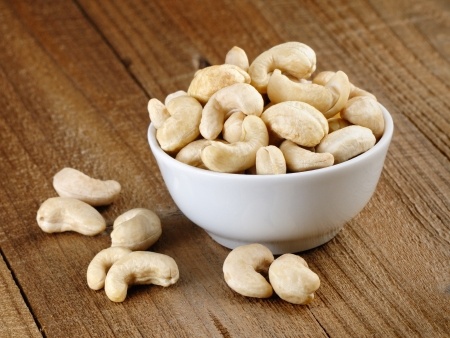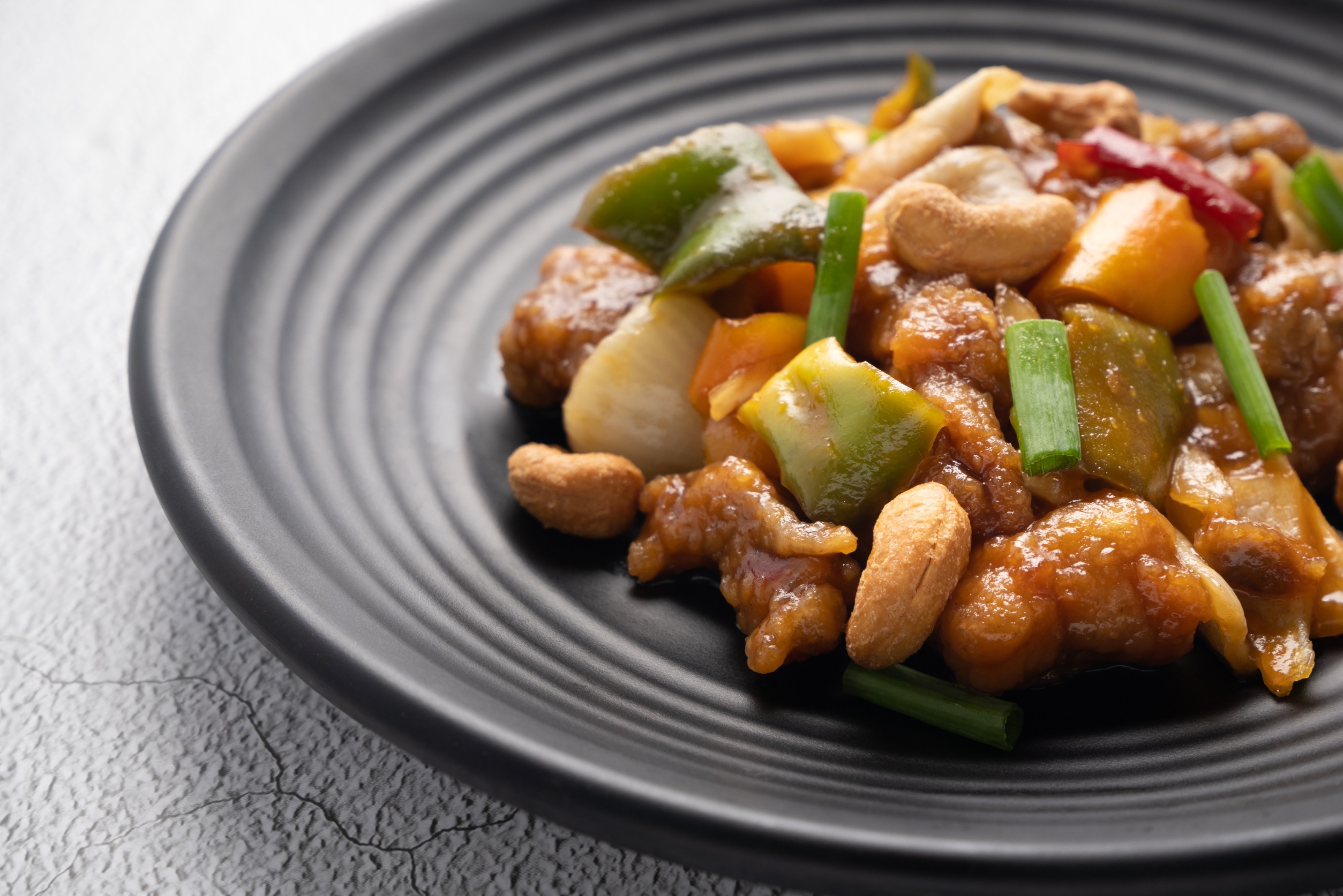
Cashew nuts though are famed for their slightly sweet, distinctive taste and I remember having a pot of these nuts roasted and thought they had the most delicious flavour. They are popular in both savoury and sweet dishes and their popularity throughout the world remains undiminished. Who hasn’t had them in a Thai curry or in granola or as a flavouring in snack bars?
The cashew (Anacardium occidentale L.) is a tropical evergreen tree belonging to the Anacardiaceae family and originally grew in the humid tropical regions of most of South America. It is grown widely and commercially in Africa, South-East Asia such as Cambodia, Laos, Vietnam and in northern Australia. The family Anacardiaceae contains about 700 species in 75 genera and includes some notorious members such as poison ivy, pistachio, mango, Asian sumac, hog plum, amongst others. The genus has eight species but only the cashew has any commercial value at the moment.
It was first named “caju” in Portuguese who took it to all parts of their empire in the 16th and 17th centuries. It was roasted as with many nuts to generate an extremely flavoursome snack but also found its way into sweet confectionary products too. A number of ice-creams, cakes, jams, sauces and pastes, and other dessert confections have all made use of the cashew. Some chinese stir-fry dishes rely on cashew as it works well with beef for example. The split between savoury and sweet applications is roughly 60:40.
The tree bears numerous, edible, pear shaped false fruits known as accessory fruits in botany terms which are purchased as cashew apples. These apples can be turned themselves into beverages on pulping and pressing.
The cashew nut itself is the true-fruit where it firmly attaches to the bottom end of the cashew apple, and appears like the clapper of a bell. The tiny, bean shaped, grey true fruit in technical terms is the drupe, where a hard outer shell encloses a single edible kernel known commercially as the cashew nut.
Consumption of Cashews
The consumption of the cashew is high throughout the world. The tope three consuming countries are the USA, India and Germany. This tree nut is now the third most popular after almond and walnut. Cashew accounts for 17 per cent of all total tree nut production in 2019 to 2020 according to the International Nut and Dried Fruit Council Foundation (2020). The demand for cashews keeps rising too. The demand has doubled globally in the years from 2000 to 2018 and it should keep rising as we go through the 2020s (Csordas, 2021).
Processing of cashews generates plenty of waste. The industry is heavily focused on the cashew kernel but the cashew apple pulp could be highly valuable. In the last decade, maximising the value of the supply value chain means a closer look at what by-products are available and whether revenue can be optimised by diversifying the use of cashew products including the kernel too. For too long, most fruit waste has been discarded as a general agricultural waste. It is possible to increase profit now by looking at what opportunities there are in both cashew production and processing (Das & Arora, 2017; Gawankar et al., 2018).
Possible Role In Diabetes Management
Some evidence exists that the stem bark of the cashew contains compounds which can decrease blood glucose levels. This suggests a potential role in diabetes management. One piece of research showed that between 100 and 800 mg/kg of either an aqueous or methanolic extract of the stem bark produced a dose dependent decrease in blood glucose levels. The bark extract also inhibited a couple of key metabolic enzymes such as alpha-glucosidase and aldose reductase (Ezuruike & Prieto, 2014).
Nutrition
The nut kernel also has a strong, comprehensive nutritional profile, full of vitamins, minerals, antioxidants, phytochemicals and oils (Trox et al., 2011). The composition of the kernel is protein 21%, carbohydrate 25%, and fat 46% (Nandi 2005). The cashew kernels are rich in lipids, proteins and fibre.
The cashew is also a very good source of minerals such as calcium, magnesium, phosphorus, sodium, iron, amongst others (Toschi et al., 1993; Ogunwolu et al., 2009; Nascimento et al., 2010). It is good for bone health.
| Nutritional Information (Per 100g) | |
| Energy (kJ) | 2374 |
| Energy (kcal) | 573 – 575 |
| Protein | 17.70g |
| Carbohydrate | 18.10g |
| Fat | 48.20g |
One of the issues with cashew as with many members of this family, is the presence of irritants. Its exterior shell contains a phenol based resin called urushiol, which is a potent toxin causing extreme rash and irritation. The resin is destroyed during processing by roasting or boiling and the edible kernel is extracted.
The roasting process help develop the sensory and aroma characteristics of the nut. Roasting accelerates chemical reactions such as the Maillard reaction and degradation of lipids to generate a pleasant colour and aroma. Due to its uneven, asymmetrical shape, processing is not straightforward.
There is the potential for an allergenic reaction owing to the presence of unremoved urushiol and possible presence of other agents.
Product Development Using Cashew
Cashews can be used whole, as pieces or ground to any size for use in a range of products. They are a good base nut for use in bars and their flavour works well with almond and walnut in particular. Salted cashew is ideal for sauces, pastes and butters. The butter form is possible second only to peanut in terms of popularity. Some well known brands use cashew in their products such as Nakd.
The products from Europe include Amazon’s own brand.
Purchase your cashew nuts here
[Please note we are an affiliate marketing partner and will make a sales commission if you purchase any items through our affiliate links. Please read our affiliate disclosure]

Anymore on diabetes control? I eat a lot more nuts nowadays because of the healthiness of them. I am looking at diabetes because I am pre- so it seems important to check out the facts. Your article is a good summary of some of the really complex stuff I come across.